The story of Bangkok is as much a story of its communities and people as it is a story of its economic success. But what if economic growth and opportunity clash with the spirit and heritage of communities? One of the people that embody this struggle for the preservation of local communities in Bangkok is Khun Sirinee. A mother, shop-owner, architect by trade and the leader of the Charoen Chai conservation group, she’s been advocating the preservation of cultural heritage around the new MRT station Wat Mangkon and beyond. Her courage and engagement has been an inspiration as it encompasses not only the Charoen Chai Community but raises awareness on the value of all of Thailand’s historic communities.
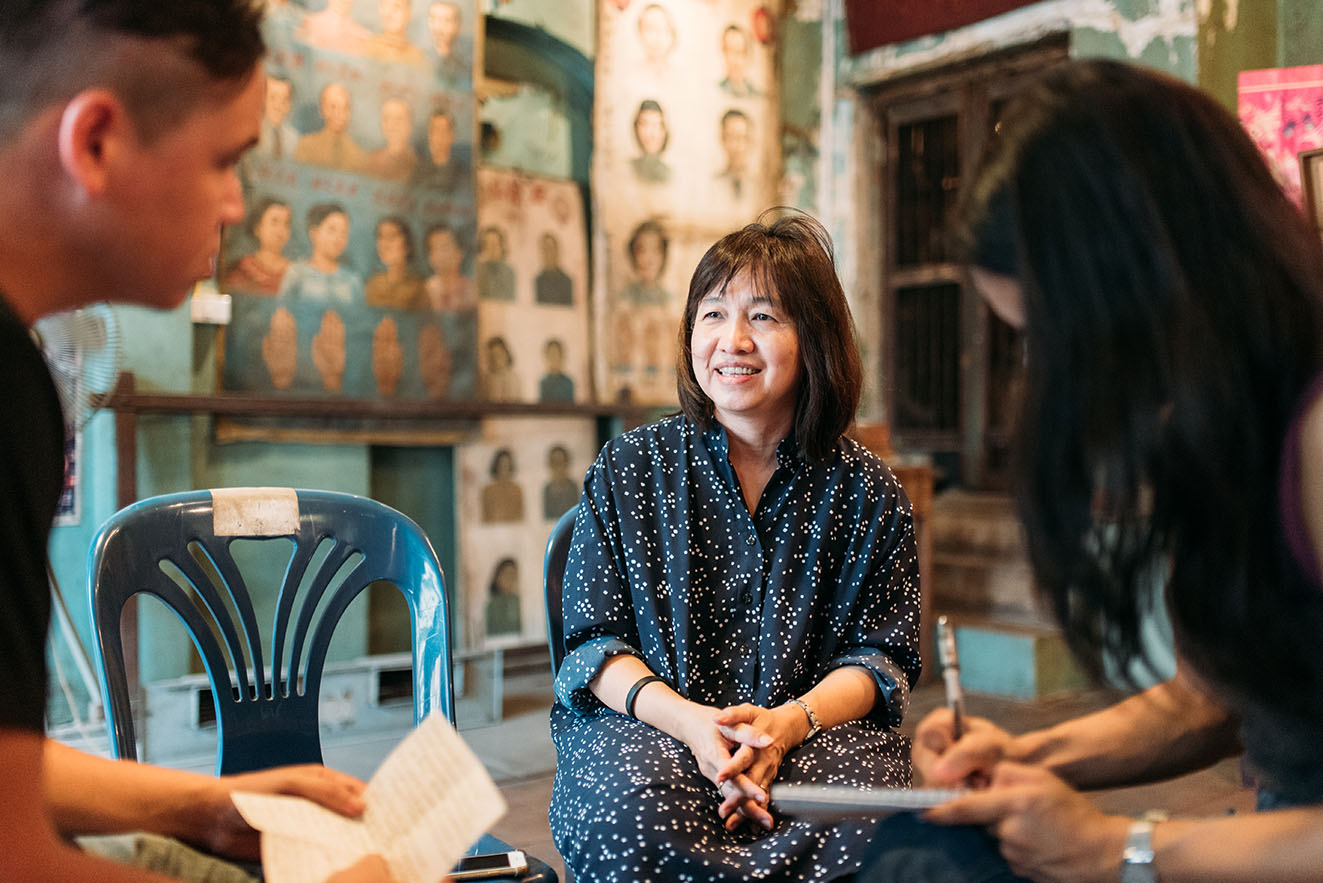
With Pee Lek at the Charoen Chai Historic Hut.
The wooden planks beneath my feed crunch as I follow K. Sirinee or Pee Lek (how I call her) up to the second floor of the Charoen Chai historic hut. The old corner house once housed a large group of Chinese opera artists. Costumes and other regalia bear homage to its former residents. Now, this unique space is the Charoen Chai Historic Hut; a museum but also the command and communication centre for the people of Charoen Chai. Various artefacts, posters and decoration grace the walls and ceiling like a cultural enigma that pulls you into the memory of the Charoen Chai community.
I’ll make myself comfy on one of the plastic chairs. Pee Lek gives us a brief intro to the history of the community. It’s a story that sounds familiar. A story of the Chinese Teochew migrants who chose Bangkok as their new home. Stories of bringing their crafts and traditions to serve their diaspora. But now, over a century later it may be all coming to an end. “The community sits on the land owned by a foundation. The foundation hired a group of academics to conduct a survey and collect information in our community. They talked to us and asked us about how we felt, what we were doing and what we wanted to do in the future?”
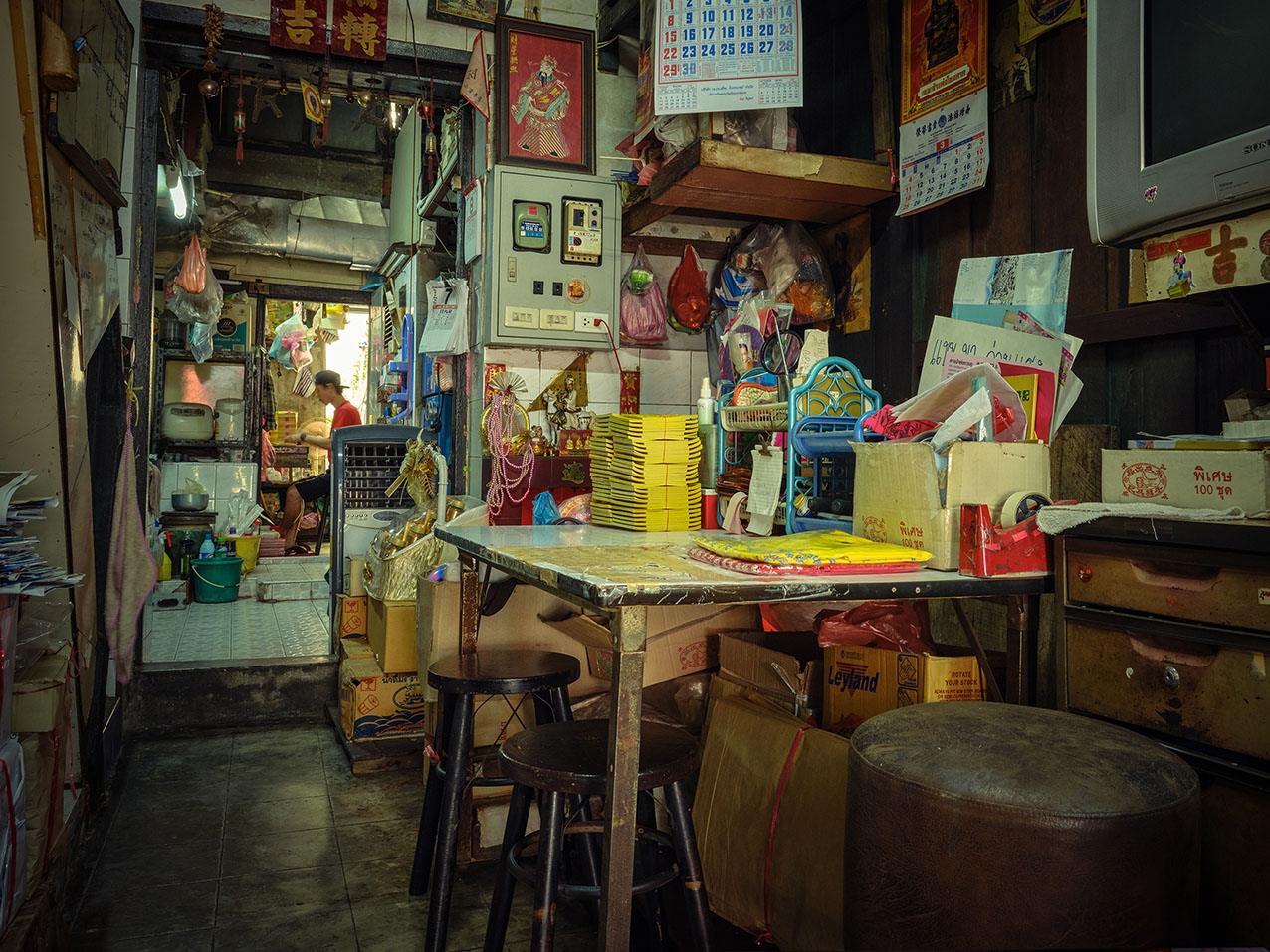
One of approximately a hundred families working in the production and sales of sacred Chinese joss paper.
“The intention of the academics was rather to get people together to think about the future. It became clear the foundation had plans for the land on which the community sits but we wanted to stay. We are not just dwelling here without doing anything but we are operating specialised and successful businesses. Where would we continue our work if we were to be moved out? This new situation sparked the beginning of the Charoen Chai Conservation Group.”
Do we want to stay? Or do we want to move?
In our focus to talk to Pee Lek, we forgot there’s no air-conditioning in this tiny museum. Sweat drips on my notes, Pee Lek seems unfazed by Bangkok’s climate and continues. What matters is that the message gets out. Charoen Chai is one of several communities whose fate is dependent on people that are hard to reach for ordinary people.
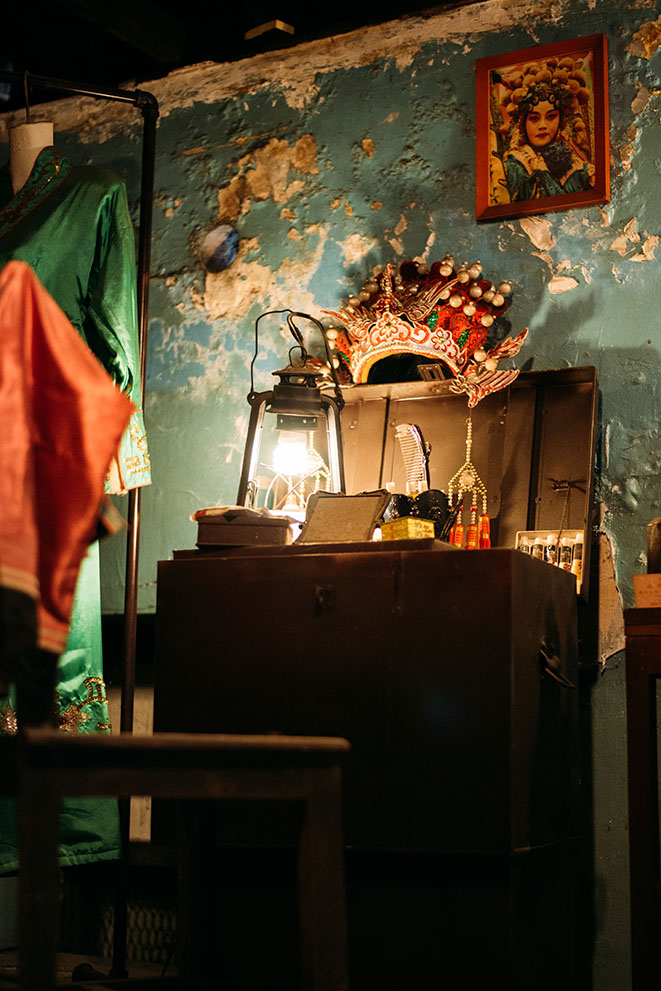
The stories of the past

Pee Lek in front of the Charoen Chai Historic Hut
I nod, I sweat, finally a breeze almost blows my paper across the room. The fan, after the aircon, it’s men’s best friend. Now, I’m not sure whether I’m sweating because of the weather or because of my blood pressure as I struggle to conceive the idea that this beautiful piece of Chinatown’s history will become another gated concrete block.
“We began talking to other people in the community, first with our direct neighbours and people we knew. We sat together and started thinking. What should we do? How should we go about this? We began to talk to more people in the community and eventually I became a representative of the group.”
Everybody had to make sacrifices.
“There was no leadership. We were all equals. Each of us has different skills and knowledge. I have a background is in architecture, so I know the value of the buildings. I could help set up the Charoen Chai Historic Hut, which doubles as our little community center and a museum. We had to let the public know that our community has value and that we are determined to preserve it and to live here.”
It’s one of these stories that we may hear about if we’re in the circle of those who care but for the general populace, it seems just not relevant. Bangkokians are busy people. They are here to make money. In our pursuit of growth, we seem to have no time to assess the losses to Bangkok’s living culture, architecture, memory and identity. I can literally hear Pee Lek shouting into Bangkok’s giant cauldron of frenetic energy that her small community is here and that it matters to its people and that it should matter to the city.

The equals, Pee Lek and her core team: Pee Art, Pee Num and Pee Ae (not in the image)

Can’t recall how many petitions and letters she had submitted.
“I help my mother running a shop here in the community. We sell picture frames. I was getting very busy working with the conservation group. I was doing everything, from submitting letters, attending meetings and seminars with different groups. I learned a lot of things and being that busy was fine since we had a shop assistant but now my mother works alone and I have to help her out.”
How to reach decision makers?
“Over the years we have done so much, I can’t remember how many meetings and seminars we attended, yet we were unable to influence any decision makers. To influence the people with power is our biggest challenge. We know exactly who has the power to make decisions and what organisations need to be involved. We also had less time available to devote as we had to take care of our businesses and our families. We have become more selective and more aware of the activities that actually bring any benefits to our cause. It’s not that activities are bad but we just simply don’t have the time to attend all of them.”
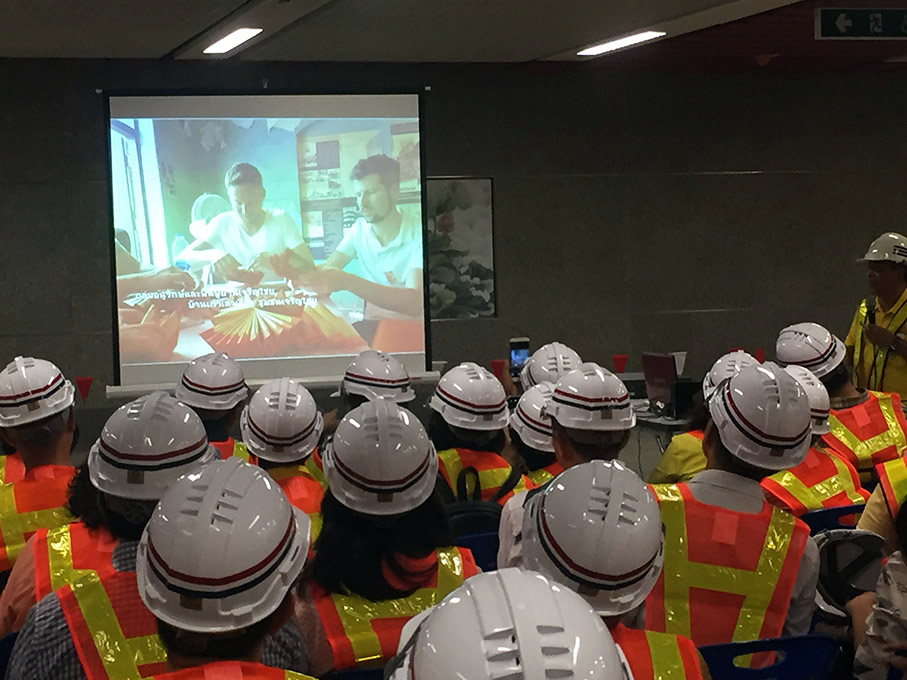
Residents of the Charoen Chai Community at meeting with the MRT developer. Slides show a presentation that reconciles infrastructure development and cultural conservation.
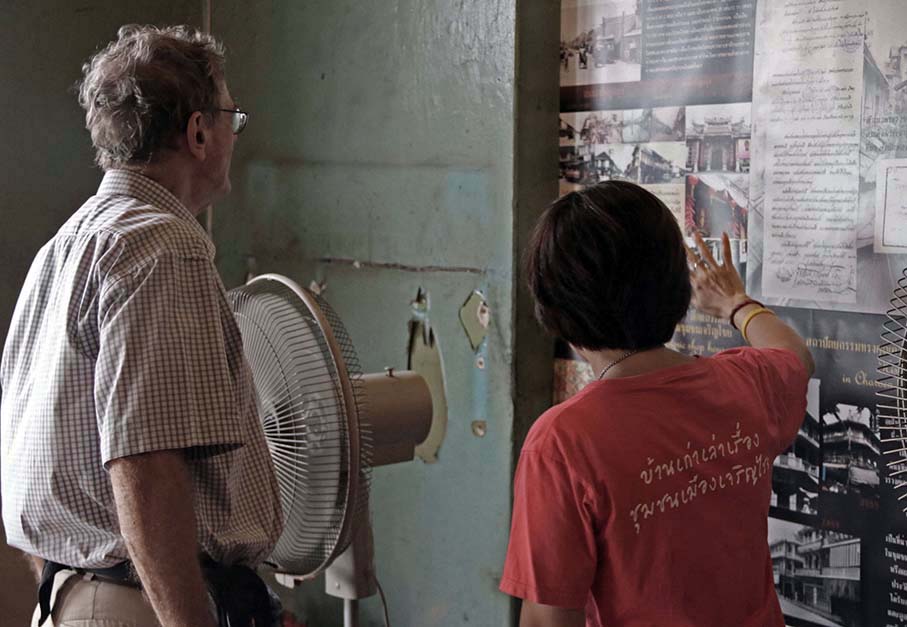
Pee Lek showing Bangkok author Steve van Beek Bangkok’s smallest museum.
Pee Lek points to the ceiling. It’s leaking during rain. Pee Lek and her team would like to develop the Charoen Chai historic hut to be an example for architectural preservation and a social space. But would you invest in fixing this place if you have no contract, no guarantees that you’re not being kicked out? I’ve been fortunate to help facilitate many workshops with visitors, travellers, Bangkokians and anyone interested to learn about the city’s past and diverse communal life. It could help to raise money for the project in the future and we all hope there will be a future. The people of Charoen Chai as well as tour guides like me and people passionate about historic and cultural tourism. For us Charoen Chai is a living link and an important piece in the development of cultural tourism in the future.
“The authorities know what needs to be preserved. The studies have been done and we have submitted all the papers to relevant government agencies such as urban planning so now it’s about those in the upper echelons to take all these facts into consideration and create the laws that can solve the problem. We can attend as many seminars as we want but if the decision makers don’t care, then there is not much we can do.”
“Public support is very important but we think the time has not come yet because we can’t say for sure what they are going to do but I hope they will acknowledge the importance of local history and heritage and let us take care of the conservation of the community.”
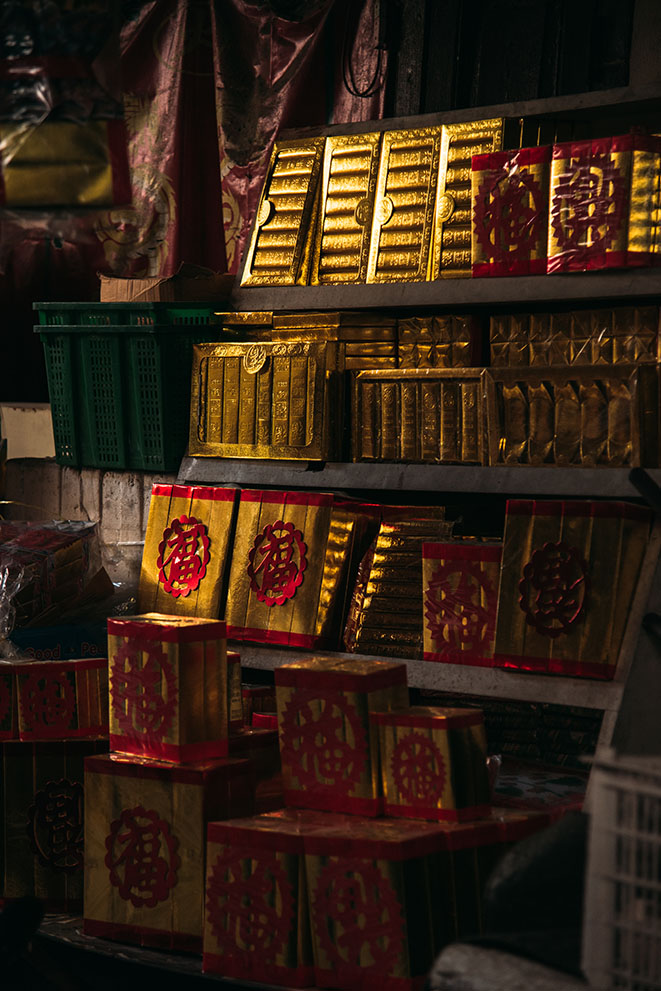
Bangkok’s last specialised neighbourhood for Chinese religious paraphernalia and joss paper.
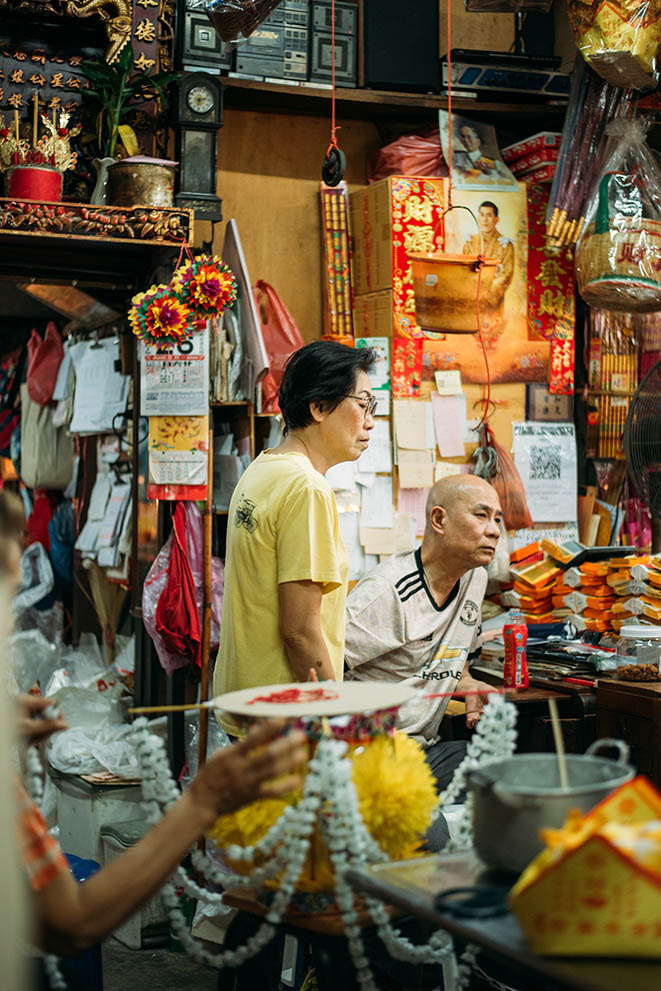
One of the many specialised shops of Charoen Chai
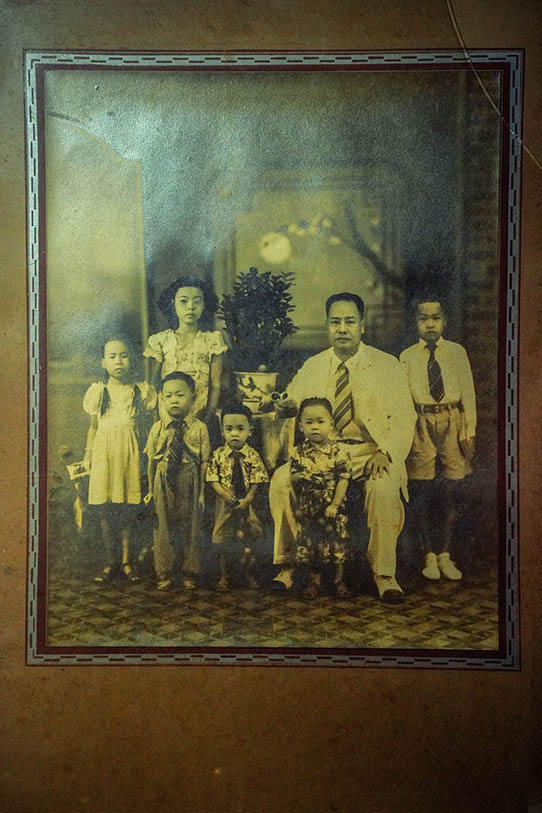
Generations past those brought the neighbourhood to success.
We are not the only ones trying to influence the authorities. Real estate developers invest along the new mass-transit lines and build apartment towers and shopping malls and their ambition is to develop our area. Land prices have skyrocketed and they have a strong influence on city planners and enough money. If politicians and big business are on the same side, it will be very difficult for us. The issue may not be that they kick us out but use methods which had been used with other communities such as with Woeng Nakhon Kasem, which means to increase rents four to five times. Nobody of can shoulder such an increase.

Pee Lek in front of her shop
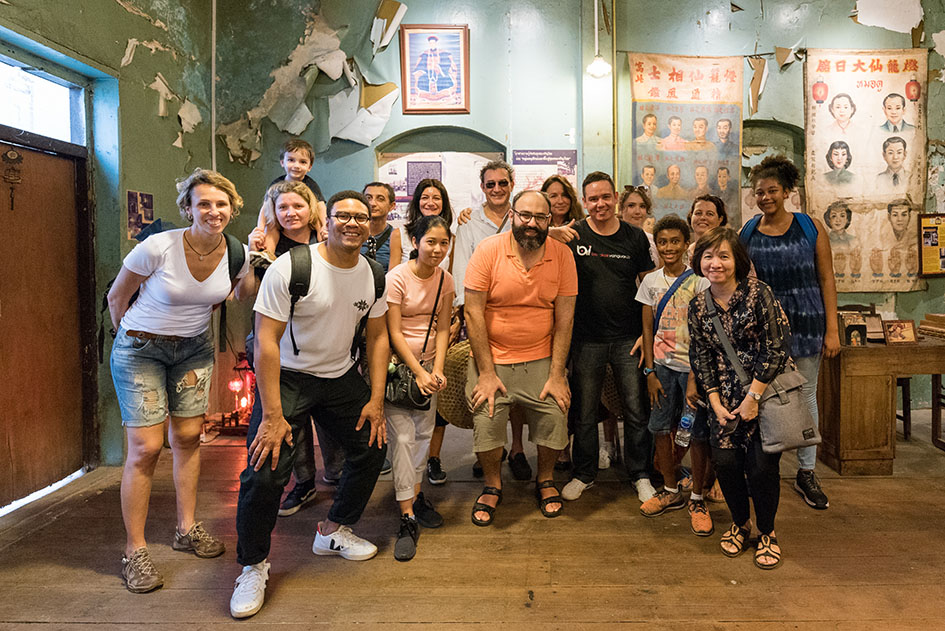
Taking visitors to the Charoen Chai Historic Hut.
“If people want to learn more and support us, they can purchase our books at the museum or purchase Charoen Chai t-shirts. Charoen Chai is more than just a block of buildings but it’s the people that give the buildings life and meaning. Whatever happens, we will not give up. This is my home, and my way of life to feed myself and my family. If you take this from me, where am I supposed to go and to work? That’s how we all feel. Nobody wants to give up or says lets not fight, there is no point.”
We stand on the balcony of the historic hut overlooking the community. The MRT is here. Chinatown is now part of the greater business district and I hope business will not be replicated as usual but more become more nuanced and adopted to the needs, identity and true potential of Chinatown’s heritage and people.



